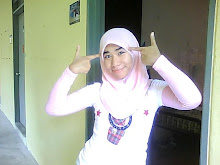
U.S. RADIO COMPANY
In 1919, General Electric (GE) formed a privately owned corporation to acquire the assets of the wireless radio company American Marconi from British Marconi. The organization, known as the Radio Corporation of America or RCA, was formally incorporated on 17 October of that year. Shortly thereafter, American Telephone and Telegraph (AT and T) and Westinghouse acquired RCA assets and became joint owners of RCA. In 1926, RCA formed a new company, the National Broadcasting Company (NBC), to oversee operation of radio stations owned by RCA, General Electric, Westinghouse and AT and T.
In the early 1930's, the Justice Department filed an antitrust suit against the company. In a 1932 consent decree, the organization's operations were separated and GE, AT and T, and Westinghouse were forced to sell their interests in the company. RCA retained its patents and full ownership of NBC. Shortly after becoming an independent company, RCA moved into new headquarters in the Rockefeller Center complex in New York City, into what later became known as Radio City.
While other American companies were cutting back on research expenditures during the depression years, David Sarnoff, President of RCA since 1930, was a staunch advocate of technological innovation. He expanded RCA's technology research division, devoting increased resources to television technology. Television pioneer Vladimir Zworykin was placed in charge of RCA's television research division. RCA acquired competing and secondary patents related to television technology, and once the organization felt that the technology had attained an appropriate level of refinement, it pushed for commercialization of the new medium.
In 1938, RCA persuaded the Radio Manufacturers Association (RMA) to consider adoption of its television system for standardization. The RMA adopted the RCA version, a 441 line, 30 pictures per second system, and presented the new standard to the FCC on 10 September 1938. Upon the recommendation of the RMA, the Federal Communications Commission (FCC) scheduled formal hearings to address the adoption of standards. The hearings, however, did not take place until January 1940.
In the interim, RCA began production of receivers and initiated a limited schedule of television programming from the New York transmitters of the National Broadcasting Corporation (NBC) basing their service upon the RMA-RCA standards. The service was inaugurated in conjunction with the opening of the New York World's Fair on 30 April 1939 and continued throughout the year. At the commission's hearing addressing standards on 15 January 1940, opposition to the proposed RMA standards emerged. The two strongest opponents of the standard were DuMont Laboratories and Philco Radio and Television. One of the criticisms voiced by both organizations was the assertion that the 441 line standard did not provide sufficient visual detail and definition. Given the lack of a clear industry consensus, the Commission did not act on the proposed RMA standards.
Despite the absence of official approval, RCA continued to employ the RMA standards and announced plans in early 1940 to increase production of television receivers, cut the price to consumers by one-third, and double their programming schedule. While some commentators saw this as a reasonable and progressive action, the Commission perceived it as a step towards prematurely freezing the standards in place, and as a consequence, scheduled another set of public hearings for 8 April 1940. At these hearings, opponents argued that the action taken by RCA was stifling research and development into other alternative standards. As a result of the hearings, the Commission eliminated commercial broadcasting until further development and refinement had transpired. Furthermore, the Commission asserted that commercialization of broadcasting would not be permitted until there was industry consensus and agreement on one common system. To marshal industry wide support for a single standard, the RMA formed the National Television System Committee (NTSC). The NTSC standards, a 525 line, 60 fields per second system, were approved by the FCC in 1941.Several years later, RCA also became a major participant in the establishment of color television standards. In 1949, the organization proposed to the FCC that its dot sequential color system, which was compatible with existing black and white receivers, be adopted as the new color standard. Citing shortcomings in the compatible systems offered by RCA and other organizations, the FCC opted to formally adopt an incompatible color system offered by the Columbia Broadcasting System as the color standard. RCA appealed this decision all the way to the Supreme Court, while simultaneously refining their color system. A second NTSC was formed to examine the color issue. In 1953, the FCC reversed itself and endorsed a modified version of the RCA dot sequential system compatible color system offered by the NTSC.
In the 1950s, RCA continued the military and defense work in which it had been heavily engaged during World War II. In the late 1950s and early 1960s, the company became involved with both satellite technology and the space program. During the 1960s, RCA began to diversify as the company acquired such disparate entities as the publishing firm Random House, and the car rental company Hertz. Throughout the 1970s and early 1980s, RCA began to divest itself of many of its acquired subsidiaries. In June 1986, RCA was acquired by General Electric, the organization that had originally established it as a subsidiary. GE retained the brand name RCA, established NBC as a relatively autonomous unit, and combined the remainder of RCA's businesses with GE operations.







